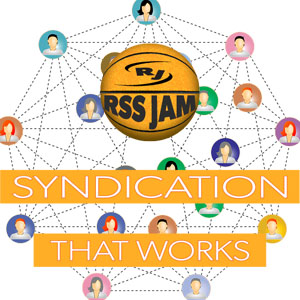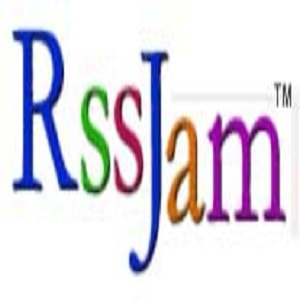|
Web syndication is the online form of making information available to a wide range of customers. The information here is the (partial) content of a site, which is made available to other sites, internet users and media - the site syndicates its content. This can be as simple as licensing a piece of text for reuse, for example with a Creative Commons license. Often, however, by web syndication we mean the syndication of web feeds. 
Web syndication can make a website more dynamic. For example, a web feed on a personal blog can automatically show the latest news, the (complete) content of which is on another site. This does not need to be updated manually, and yet the site is always provided with new information (e.g. the weather). If the provider (the content provider) changes their site content, this also changes on the customer's site. Benefits of Web Content SyndicationFor the provider:
For the customer:
The Semantic WebWeb syndication is also part of the semantic web. The XML application can be used for any kind of information that needs to be aggregated at meta-level. In his book 'The World Wide Web', World Wide Web inventor Tim Berners-Lee gives an example of how in principle non-interconnectable load systems can still exchange information with each other. He also discusses an example where someone would like to buy a yellow car but cannot find web services with a current range of products of his interest. Provided it is formatted in the right XML schema, this type of supply and demand can also be brought together via RSS feeds. Social Syndication and BenefitsMost people spend a large part of the time they spend online on social platforms. This makes feeds particularly useful for spreading your message automatically on social platforms like Facebook, Twitter, LinkdIn and similar platforms. Instead of you hunting for your visitor on the open web, it becomes more like fishing in a pool. You have direct access to the gathering grounds of large numbers of internet users. Conclussion:There are many benefits of using feeds in your online marketing efforts. Reach, less work, brand awareness and automatic backlinks are just the tip of the proverbial iceberg. from https://rssjam.com/why-use-web-syndication.html
0 Comments
Syndication is the distribution of informational or creative content from one broadcaster to another. Sometimes you may need a contract or license to reuse the content. This transfer is applicable for any means of communication.  Types of SyndicationTelevision broadcastingA television production company generally produces its programmes under contract with a network, which retains only its broadcasting rights. However, once that contract is fulfilled, the production company may sign syndication contracts. This allows other television networks to broadcast repeats of the episodes, in an attempt to get new revenue. This has made possible the worldwide popularity of many television series originally made for a very specific market. There are also programmes made exclusively for syndication and not for a specific broadcaster. These programs are sold to multiple stations, both nationally and worldwide. This may be lucrative if successful, but the distributor may only be able to sell the programme to a limited number of markets. Printed materialThis type of syndication occurs when newspapers or magazines license articles, columns, comic strips and other content for publications such as newspapers, magazines and websites. Until 1970, syndication played a major role in the distribution of comics. They were mainly found in the United States and Europe and resold the comic strips from comic strip studios such as Toonder Studios. Around 1930 there were about 130 agencies worldwide, which sold about 1600 comic strips to about 13,700 newspapers. The best-selling comic through a syndication agency was Jim Davis' Garfield. Well-known syndication agencies that sold comics are the American King Features Syndicate and the Dutch Swan Features Syndicate. After 1970, the importance of syndications in the distribution of comics declined. Website contentWeb syndication is the online form of making information available to a wide range of readers. Part of the content of a web page is made available to other sites or individual subscribers through web resources, also known as feeds, to provide other readers with a summary or update of content recently added to sites (for example, news content or forum posts). The most common standard for this is RSS, followed by Atom. Computer programs that are compatible with one of these standards periodically consult a page of headlines that refer to the complete articles on the original website. Unlike other means of communication, rights to syndicate web content are usually free of charge, without a contract between the parties, but may be licensed for rules of use. RadioRadio broadcasts generally operate in the same way as television broadcasts, but radio stations (usually an FM broadcaster) may obtain programming from large national networks, to which they are normally permanently connected by a prior contract. The Value Of Web SyndicationOf course we all want our content to be read by as many people as possible. It can be useful, for example, to bring your article to the attention of a larger audience through 'content syndication'. By means of content syndication, your content will be reused on other websites and more internet users will see your article. This makes it available to other websites. This can ultimately lead to more visitors to your website. Sharing your contentIt's a good tactic to share your high quality content online on another website where your target audience is present. This way you reach more people who are interested in your field. Social media is a good example. Think of Facebook, Twitter, Pinterest and the like. from https://rssjam.com/what-is-syndication.html RSS is an internet language that makes it easy for others to read the information on your page. It is mainly used for pages that are often refreshed, such as news pages or weblogs. RSS is an application of internet metadata XML. So it can also happen that you see this abbreviation on a regular basis, instead of RSS.  How does RSS work exactly? Suppose you have your own internet page, then you can use a so-called RSS Feed to spread the word. This will create a link that refers directly to your page. If you enter this in an RSS reader, you do not go to the page but all messages in the reader will be shown. In this way, people can keep up to date with the latest messages from various pages. This saves another search through five internet pages to see if a new message happened to appear somewhere just to find out that the time spent searching and loading was for nothing. Other internet pages can also pick up the RSS Feed, which brings your content to their (collection) site. An RSS Feed can easily be compared to a newsletter. The main difference is that visitors do not have to provide an email address to read your RSS Feed and that their RSS reader determines how the information is displayed in the feed. There are many websites that offer RSS feeds. You can often recognize them by an RSS/XML logo on their page. AbbreviationRSS, or Really Simple Syndication, is a family of web feed formats. The abbreviation RSS has three meanings:
So you can read RSS files through a special RSS reader but also through special websites. For example Feedzilla, Feedo, Google Reader (no longer supported). They all work according to the same principle. With some RSS readers you can also blog directly or visit Usenet groups. ScrapingAnother concept that occasionally crops up with RSS is scraping. This is still common and means that an ordinary HTML page is converted to another format, for example XML or RSS. Benefits of RSS Feeds
Doing it yourselfIf you have your own page where new things appear regularly, it is useful to create your own RSS file. If you can do a bit of HTML language and cut and paste a lot, it's certainly not difficult. Click here for simple instructions. Wordpress creates an automatic default feed url that can be found at domain.com/feed from https://rssjam.com |
RSSJamRSS is an internet language that makes it easy for others to read the information on your page. It is mainly used for pages that are often refreshed, such as news pages or weblogs.RSS is an application of internet metadata XML. So it can also happen that you see this abbreviation on a regular basis, instead of RSS. ArchivesNo Archives Categories |

 RSS Feed
RSS Feed
